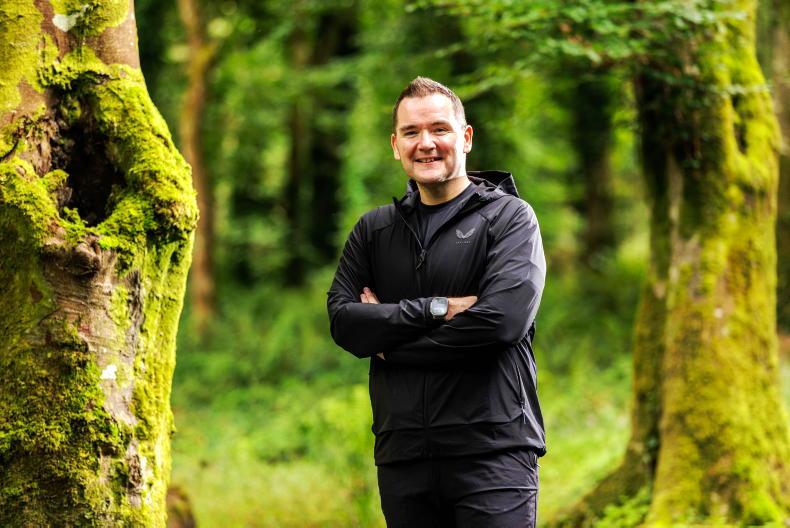While agriculture, food and health have been studied for hundreds of years, nutritional science is one of the newer sciences. Although lemons were tested for treating scurvy in sailors in the 1700s, the first vitamin, thiamine, was only isolated in 1926. From that moment on, the next half a century has provided advancements in understanding nutrients in food, the role of nutrients and foods in health, treatment of deficiency diseases, and more recently the understanding of dietary intake on chronic health condition prevention and treatments.
Food is one of the most complex biological systems and combines a range of sciences including chemistry, physics and biology. Add it to health, and we have to include human physiology, anatomy, genetics, disease development, even aspects of pharmacology. However, because food is readily available, and everyone eats, nutritional science is one of the most confusing and often times ill-represented health sectors.
Scientifically it is important to understand that nutrition is an evolving science, and highly influenced by societal changes. Early nutritional research mirrored what was happening in society in the early part of the 19th century. The first and second world wars meant widespread food shortages and rations, leading to malnutrition and health issues from reduced food accessibility. Research was focused on understanding deficiency diseases relating to vitamins and minerals, like beri-beri, scurvy etc. Moving into the 1950s, global peace and societal safety also allowed for more food, including energy-rich fats, carbohydrates and animal proteins. As chronic health conditions started to increase, nutrition health messaging started to pitch against fat and carbohydrates, heralding the diet restriction era. Advancement in nutritional science research has improved our understanding of nutrient components (eg different types of fats), and the role a varied dietary intake has in how nutrients interact with the body, and the importance of a whole food approach.
In today’s world, however, sorting fact from fiction, expert from influencer, can be difficult to navigate. When it comes to online information, it’s a lot trickier. It’s not always easy to work out the trustworthiness of health information as anyone can create a website, with no requirement for a gatekeeper to check the reliability of information. Here are some simple tips that you can use to work out the credibility of nutrition health information.
1 Government-endorsed websites
Government-endorsed websites are a reliable source of nutrition and health information as they have a range of advisory councils and boards that provide scientific advice to the content and policies made. Government websites usually list the scientific evidence used in the creation of nutrition programmes, health infographics and any other content they provide. These websites include health websites (such as Healthy Ireland and SafeFood); peak industry bodies (such as the Food Safety Authority of Ireland), and government agencies (such as the HSE).
2 About us and date published
The “about us” page gives you insight into who is providing or endorsing the content of the website. It tells you who runs the site like a credible health organisation, a qualified (registered) individual, or if there is an editorial board of qualified experts. The editorial board provides quality control, reviewing the content. The date when the site was updated or when the information was posted gives you an indication on how current the information is.
3 Evidence v testimonials
As great as testimonials are, it can be hard to determine if a testimonial is legitimate or biased. There is a possibility that they may be either paid endorsements or given free products or services in exchange for positive reviews. Bloggers and influencers make their living by promoting products but they may not have the qualifications to support claims made by a product. Claims should be backed up by reputable information sources such as scientific evidence, research papers, or government reports.
4 Magic promises
“If it sounds too good to be true, it usually is” is good advice when it comes to nutrition information. Products or services that make outlandish promises, quick and easy results or contain secret ingredients should raise your sceptic alarm. Claims require adequate, reproducible data (not a one-off study) to back them up. Check who endorses claims or promises as well – is this person(s) credible and qualified in the area of nutrition?
5 Bias
Websites that are funded may have inherent bias because the funders have a vested interest in the information on the website, and potential sales from products or services. Check if the website is funded and if so, for what purpose. It’s also important to check if members of the editorial board, or content writers are funded or are owners/shareholders in related product companies. If the website only recommends its own products, and has conducted its own research, without peer review, this needs to be taken into consideration. And lastly, check if there are any philosophical ideologies that influence the advice provided.
Using these five tips when assessing nutrition information, will help you wade through a lot of confusing, contradictory information sources to more reliable, credible resources.
About: Dr Anneline Padayachee (PhD (Nutritional Food Science), R. Nutr., MAIFST) is an award-winning scientist and published author renowned for her easy communication style, and has been named one of Australia’s leading science communicators. Visit www.drannelinepadayachee.com
When online, get your food nurition and food safety information from reputable sources.
Healthy Ireland
Safefood Food Safety Authority of IrelandHSE Health and wellbeingYou can also click here to get paper copies of all the HSE information referenced in these pages. Read more
Cutting through the bull: milk v ‘mylk’
Cutting Through the Bull: thou shalt not mislead the consumer
Does the food deliver ‘exactly what it says on the tin’?
While agriculture, food and health have been studied for hundreds of years, nutritional science is one of the newer sciences. Although lemons were tested for treating scurvy in sailors in the 1700s, the first vitamin, thiamine, was only isolated in 1926. From that moment on, the next half a century has provided advancements in understanding nutrients in food, the role of nutrients and foods in health, treatment of deficiency diseases, and more recently the understanding of dietary intake on chronic health condition prevention and treatments.
Food is one of the most complex biological systems and combines a range of sciences including chemistry, physics and biology. Add it to health, and we have to include human physiology, anatomy, genetics, disease development, even aspects of pharmacology. However, because food is readily available, and everyone eats, nutritional science is one of the most confusing and often times ill-represented health sectors.
Scientifically it is important to understand that nutrition is an evolving science, and highly influenced by societal changes. Early nutritional research mirrored what was happening in society in the early part of the 19th century. The first and second world wars meant widespread food shortages and rations, leading to malnutrition and health issues from reduced food accessibility. Research was focused on understanding deficiency diseases relating to vitamins and minerals, like beri-beri, scurvy etc. Moving into the 1950s, global peace and societal safety also allowed for more food, including energy-rich fats, carbohydrates and animal proteins. As chronic health conditions started to increase, nutrition health messaging started to pitch against fat and carbohydrates, heralding the diet restriction era. Advancement in nutritional science research has improved our understanding of nutrient components (eg different types of fats), and the role a varied dietary intake has in how nutrients interact with the body, and the importance of a whole food approach.
In today’s world, however, sorting fact from fiction, expert from influencer, can be difficult to navigate. When it comes to online information, it’s a lot trickier. It’s not always easy to work out the trustworthiness of health information as anyone can create a website, with no requirement for a gatekeeper to check the reliability of information. Here are some simple tips that you can use to work out the credibility of nutrition health information.
1 Government-endorsed websites
Government-endorsed websites are a reliable source of nutrition and health information as they have a range of advisory councils and boards that provide scientific advice to the content and policies made. Government websites usually list the scientific evidence used in the creation of nutrition programmes, health infographics and any other content they provide. These websites include health websites (such as Healthy Ireland and SafeFood); peak industry bodies (such as the Food Safety Authority of Ireland), and government agencies (such as the HSE).
2 About us and date published
The “about us” page gives you insight into who is providing or endorsing the content of the website. It tells you who runs the site like a credible health organisation, a qualified (registered) individual, or if there is an editorial board of qualified experts. The editorial board provides quality control, reviewing the content. The date when the site was updated or when the information was posted gives you an indication on how current the information is.
3 Evidence v testimonials
As great as testimonials are, it can be hard to determine if a testimonial is legitimate or biased. There is a possibility that they may be either paid endorsements or given free products or services in exchange for positive reviews. Bloggers and influencers make their living by promoting products but they may not have the qualifications to support claims made by a product. Claims should be backed up by reputable information sources such as scientific evidence, research papers, or government reports.
4 Magic promises
“If it sounds too good to be true, it usually is” is good advice when it comes to nutrition information. Products or services that make outlandish promises, quick and easy results or contain secret ingredients should raise your sceptic alarm. Claims require adequate, reproducible data (not a one-off study) to back them up. Check who endorses claims or promises as well – is this person(s) credible and qualified in the area of nutrition?
5 Bias
Websites that are funded may have inherent bias because the funders have a vested interest in the information on the website, and potential sales from products or services. Check if the website is funded and if so, for what purpose. It’s also important to check if members of the editorial board, or content writers are funded or are owners/shareholders in related product companies. If the website only recommends its own products, and has conducted its own research, without peer review, this needs to be taken into consideration. And lastly, check if there are any philosophical ideologies that influence the advice provided.
Using these five tips when assessing nutrition information, will help you wade through a lot of confusing, contradictory information sources to more reliable, credible resources.
About: Dr Anneline Padayachee (PhD (Nutritional Food Science), R. Nutr., MAIFST) is an award-winning scientist and published author renowned for her easy communication style, and has been named one of Australia’s leading science communicators. Visit www.drannelinepadayachee.com
When online, get your food nurition and food safety information from reputable sources.
Healthy Ireland
Safefood Food Safety Authority of IrelandHSE Health and wellbeingYou can also click here to get paper copies of all the HSE information referenced in these pages. Read more
Cutting through the bull: milk v ‘mylk’
Cutting Through the Bull: thou shalt not mislead the consumer
Does the food deliver ‘exactly what it says on the tin’?









SHARING OPTIONS